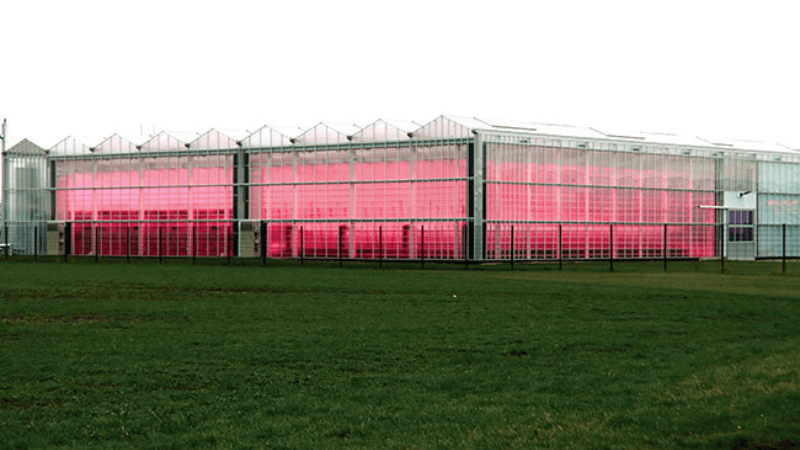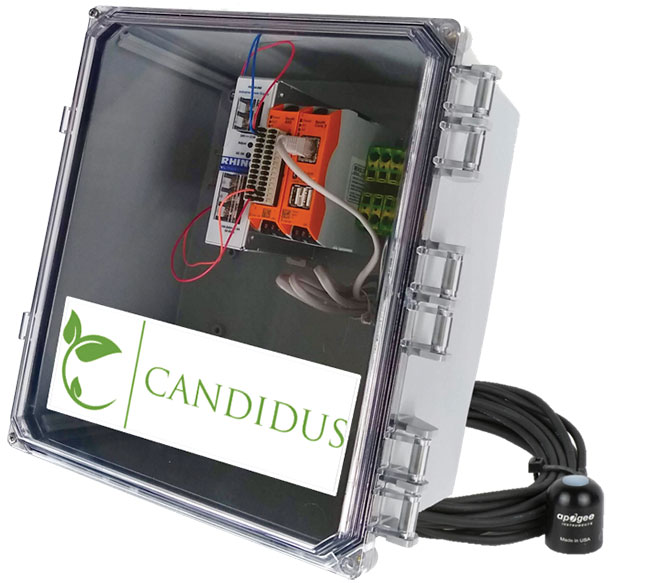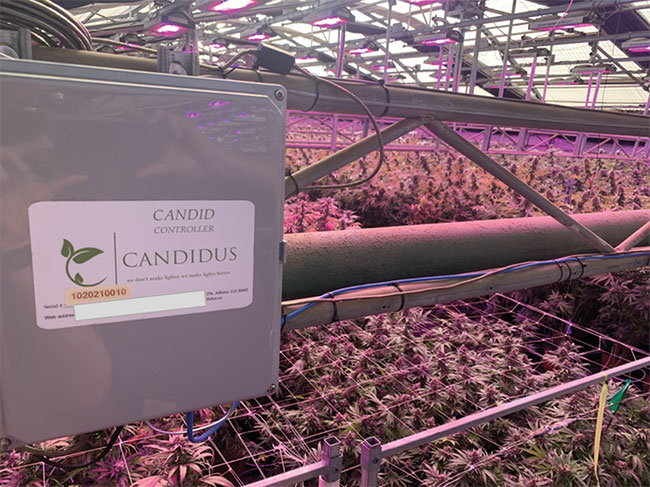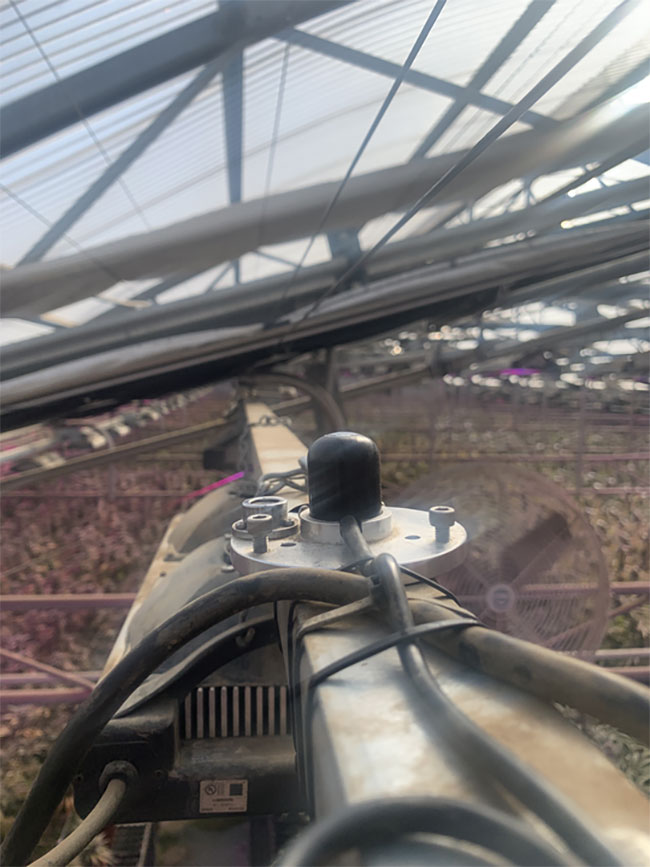
Unlock your lighting potential
Supplemental lighting is often required for consistent year-round production, but deciding what type of light fixtures to use and how to control them is not always simple. Since each greenhouse is different, it is not possible to come up with general rules to determine the optimal solution for a specific greenhouse. In this article, I cover some of the topics you should think about related to your lighting and lighting control system.
HPS OR LED?
A simple question, without a simple answer. If you have a high pressure sodium (HPS) lighting system in place, should you consider upgrading to light-emitting diode (LED) fixtures? That largely depends on the following: What is the cost of electricity, how much do you use your lights, and what incentives/rebates are available? Good LED fixtures are typically at least 50% more efficient (light produced per unit energy) than HPS fixtures, so if electricity prices are high in your area, LED fixtures become more appealing.
Likewise, if you use the lights a lot, LED fixtures become more appealing — not only do they lower electricity costs, they typically also require less maintenance. Electricity costs for supplemental lighting can be hard to estimate. To help with this, we have developed interactive calculators that can estimate electricity costs for lighting based on the user’s specific location and greenhouse configuration. The calculators are available at www.hortlamp.org/outreach/determine-lighting.
In many cases, the determining factor is whether there are incentive or rebate programs available to help pay for the cost of upgrading to LED fixtures. LED fixtures are substantially more expensive than HPS fixtures, but there are many programs that can help lower the cost of LED fixtures. Check with your local utility company to see if they have any incentive programs available.
The USDA’s National Resource Conservation Service has programs in place to help pay for energy-efficiency projects. The EQIP program is a good fit in many cases. The program starts with an energy audit, resulting in recommendations to improve energy efficiency, and may help pay for the investment needed to implement those recommendations. In some cases, lighting suppliers have specialists who can help you find the best options for rebates or incentives.
To be eligible for rebates, LED fixtures generally need to be listed on the qualified product list maintained by the DesignLights Consortium at www.designlights.org/horticulture. Note that there are large differences among the many fixtures listed, but the webpage has nice functionality to help you sort based on characteristics you consider important, such as power, light output, efficacy and many others.

Upgrading your lighting system to LEDs is not always the best option. If your electricity is relatively cheap and you don’t use the lights very much, look into maintenance first. HPS fixtures should be replaced after 4,000 to 5,000 hours of use, but in many cases, growers try to get more life out of their aging bulbs.
HPS fixtures inevitably become less efficient over time. Because this decline in light output happens gradually, it can be hard to notice. The only way to be sure how much light your fixtures provide is to measure it with a PAR (photosynthetically active radiation) sensor. Take readings every few months when there is no sunlight and the lighting system is on at full power. Do so at multiple locations in the greenhouse. Then plot the light levels over time to monitor how quickly the light levels decrease. In many cases, simply replacing the HPS bulbs, rather than replacing the entire lighting system, is still the most cost-effective option.

And when you replace HPS bulbs, clean the reflectors at the same time. Just like the bulbs themselves, reflectors can become less efficient over time. Some of this is due to aging and irreversibility. But in many cases, dust accumulation can reduce the performance of reflectors. A quick cleaning of the reflector can increase the light output of a fixture — a simple, quick task that is all too often overlooked.
CONTROLLING YOUR LIGHTS
Installing and operating supplemental lighting is expensive, so it is important to get the most possible value out of it, and that requires a good way to control the light fixtures. LED fixtures provide major advantages over HPS fixtures when it comes to control. The vast majority of LED fixtures on the market are dimmable, and the lights respond instantaneously to a signal that is sent to the fixtures. HPS fixtures, on the other hand, require a warm-up and cool-down period and cannot be dimmed precisely. A common question related to dimming LED fixtures is whether it affects the longevity of the fixtures. And it does not. Dimming LED fixtures reduces their operating temperature, which can slightly increase their efficiency (but typically not enough to worry about). A lower operating temperature can also extend the lifespan of the fixtures.
It is important to remember that LED fixtures are not just simple, more efficient replacements for HPS fixtures; LED fixtures offer control opportunities that go far beyond what can be done with HPS fixtures. When switching from HPS to LEDs, it is important to evaluate whether the current control system is still the best option. Or is it time to upgrade your lighting control system as well? Let’s look at the most popular lighting control approaches.
Timers are simple, cheap and crude. While using timers to turn the lights on and off is the simplest and cheapest approach, it cannot give you good control over your growing environment. By their very nature, timers cannot respond to changing weather conditions, unless someone is regularly checking the weather forecast and reprogramming the timers accordingly — not a very practical approach and, in practice, the timers get reprogrammed only a few times a year. Given the costs associated with installing and operating a lighting system, more advanced lighting control approaches will provide better value.
Threshold control is a step up. In many cases, the supplemental lighting is controlled based on how much sunlight there is. Whenever the sunlight drops below a particular threshold, the lights are turned on. This is typically combined with a timer to ensure that the lights don’t run 24/7. With HPS fixtures, threshold control needs to account for the required warm-up and cool-down of the fixtures, so it is typical to leave the lights on for at least half an hour, and once they are turned off, to leave them off for at least 30 minutes. With LED fixtures, this is not needed, since they can be turned on and off rapidly without any negative consequences. That said, it makes sense to leave the LED fixtures on or off for at least five minutes at a time, just so the lights don’t start to flicker when the sunlight level is right at the threshold.
A refinement to threshold control that can be achieved only with dimmable LEDs is to provide only enough supplemental light to reach a specific threshold. For example, if the threshold is set at a PAR value of 400 µmol/m2/s, and the current sunlight level is 350 µmol/m2/s, it is possible to control how much supplemental light is provided. In this case, adding another 50 µmol/m2/s of supplemental light would allow you to reach the threshold value. Few lighting control systems currently have this functionality, but we will likely see more of this in the future.
DLI control is the most advanced lighting control system that aims to make sure that the crop gets a similar amount of light each day. Rather than controlling based on instantaneous sunlight levels, the goal is to achieve a consistent daily light integral (DLI, the total amount of PAR in the greenhouse in a 24-hour period). The control system continuously monitors the amount of sunlight, adds it up over the course of the day and determines whether supplemental light is needed.
Good DLI control systems can provide very consistent lighting conditions from day to day by providing more supplemental light on cloudy days and less on sunny days. DLI control can be achieved using both HPS fixtures (see Cornell’s LASSI system) or LED fixtures. Although the dimming capabilities of many LED fixtures in principle provide better control, a good lighting control system can be very effective with either HPS or LED fixtures. That said, not all lighting control systems are created equal and some are more accurate than others. When looking into these systems, ask about how well the system really does control DLI and whether this has been verified by an independent third party.

Based on my experience, a good DLI control system not only ensures consistent growing conditions, but also reduces energy use by 20 to 30% compared to less advanced controllers. And on an annual basis, that can be a significant amount of money. Because of these energy savings, some utility companies are starting to provide rebates for “smart” lighting controllers, in addition to rebates for efficient LED fixtures.
THINK ABOUT LIGHT SENSORS
Both threshold and DLI control rely on accurate light readings from one or more light sensors. Think about where the light sensor you use to control lights is mounted. Is it inside or outside of the greenhouse? If it is outside, do you know how much of the outdoor sunlight actually gets into your greenhouse? Probably less than you think, but you should measure it. And in many cases, light sensors mounted outside of the greenhouse are pyranometers, which measure the total energy of the sunlight, and not PAR sensors. In principle that is not a major issue, since the energy of sunlight can be converted to PAR by multiplying by 2.02.
The other issue related to light sensors is maintenance. Ideally, light sensors should be cleaned regularly, since dust buildup on the sensor will affect the readings. In addition, light sensors should be recalibrated every one to two years. This is especially important for older models of light sensors, which often are not sealed very well and allow water vapor to get into the sensor. That water vapor can affect the calibration and eventually make the sensor inaccurate. This seems to be less of an issue with newer sensors, since reputable sensor companies now do a much better job sealing the sensors. Remember that not cleaning or calibrating your light sensors may result in bad readings, which will inevitably affect the lighting control system. To check the calibration of your light sensors, there is a free online tool available at www.clearskycalculator.com. Make sure to read the instructions carefully.
For an enhanced reading experience, view this article in our digital edition by clicking here.


 Video Library
Video Library 




















